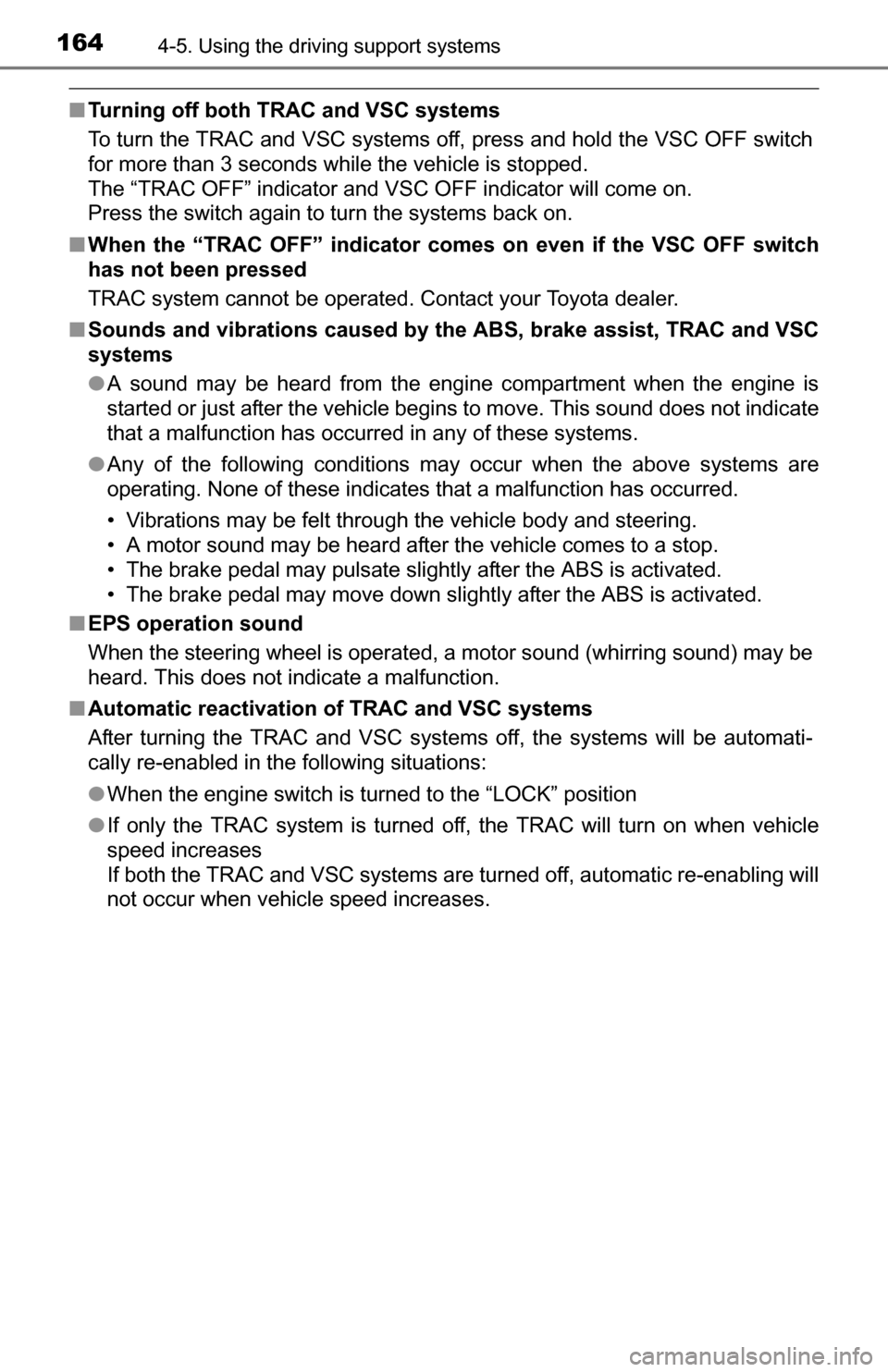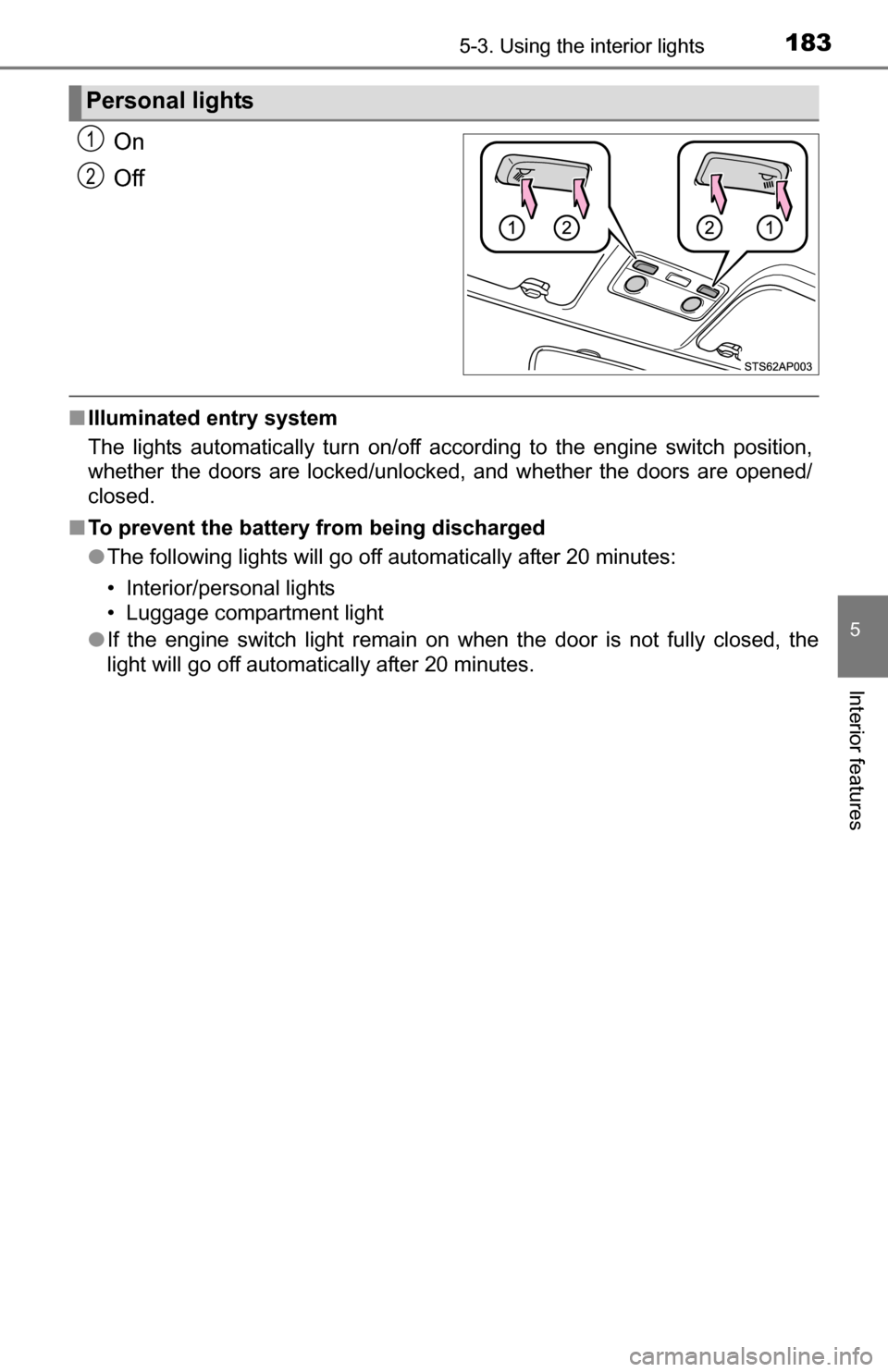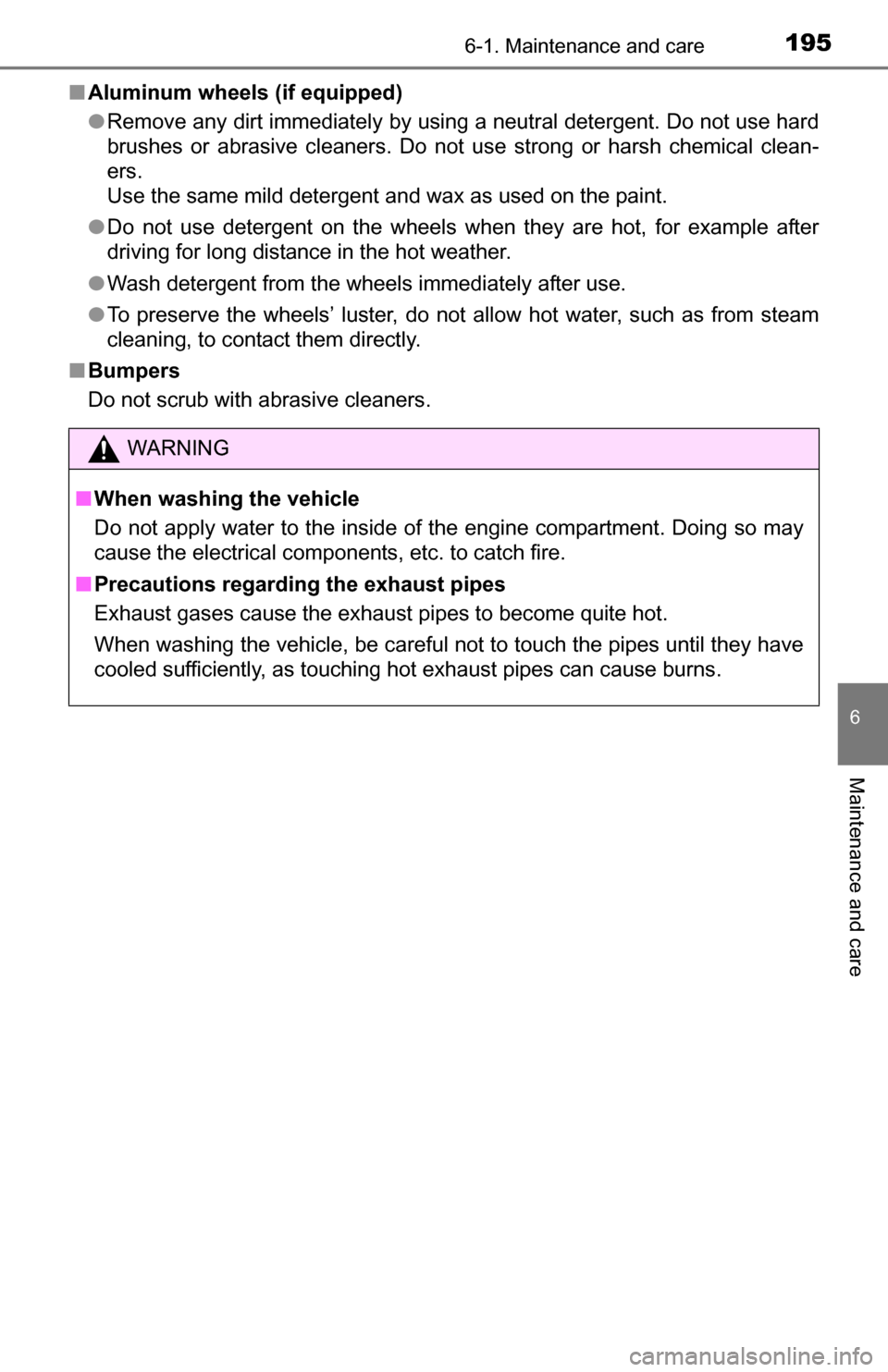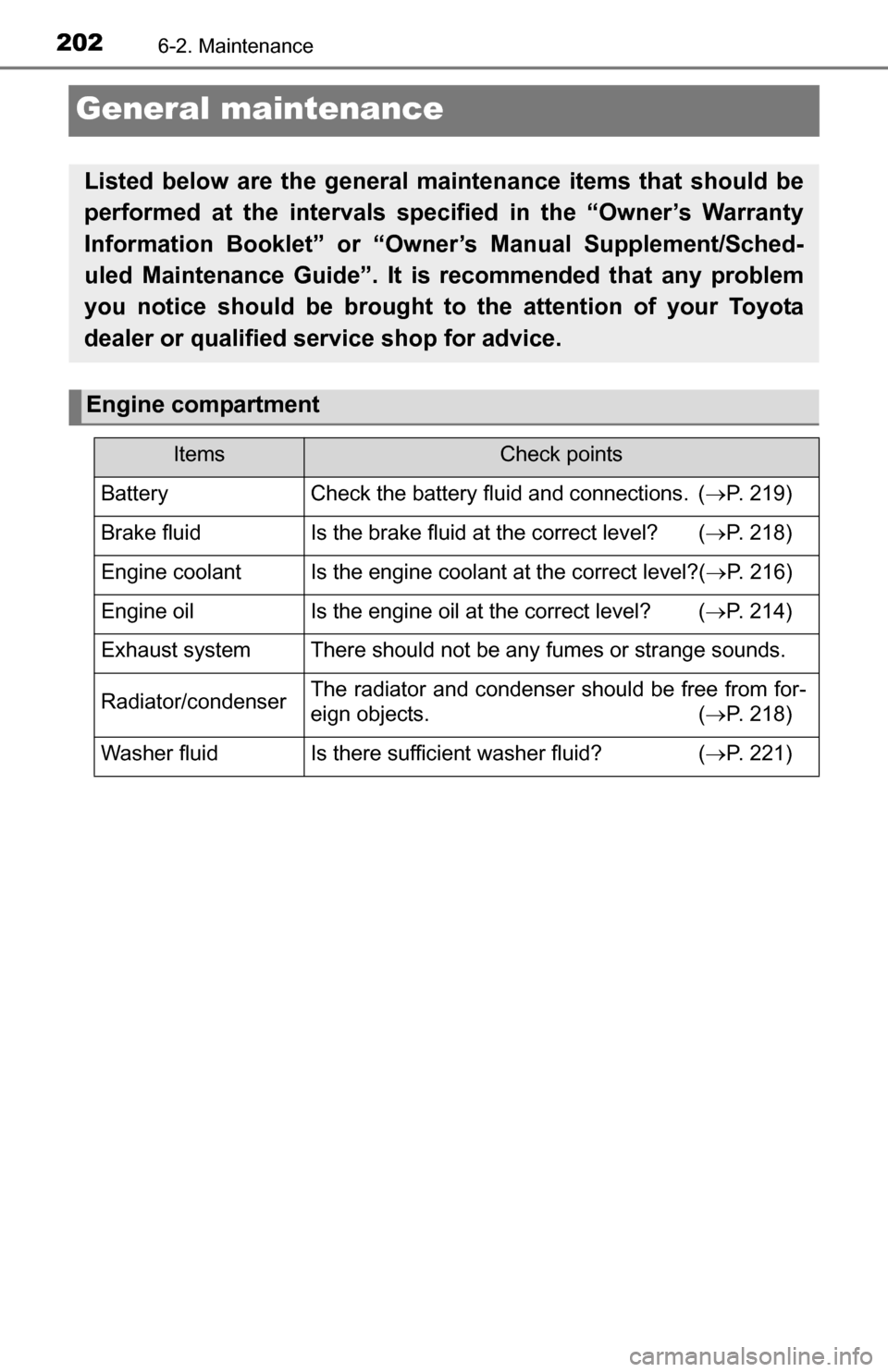2016 TOYOTA YARIS Engine Compartment
[x] Cancel search: Engine CompartmentPage 3 of 368

3
1
8 7 5 4
3
2
9
6
4-1. Before drivingDriving the vehicle ............. 116
Cargo and luggage............ 127
Vehicle load limits ............. 131
Trailer towing..................... 132
Dinghy towing (vehicles with an automatic
transmission)................... 133
Dinghy towing (vehicles with a manual
transmission)................... 134
4-2. Driving procedures
Engine (ignition) switch ..... 136
Automatic transmission ..... 139
Manual transmission ......... 141
Turn signal lever................ 142
Parking brake .................... 143
4-3. Operating the lights and wipers
Headlight switch ................ 144
Fog light switch ................. 147
Windshield wipers and washer ..................... 149
Rear window wiper and washer ..................... 152
4-4. Refueling
Opening the fuel tank cap .................................. 155
4-5. Using the driving support systems
Cruise control .................... 158
Driving assist systems....... 162
4-6. Driving tips
Winter driving tips.............. 167 5-1. Using the air conditioning
system and defogger
Air conditioning system...... 172
5-2. Using the audio system Steering wheel audio switches........................... 180
AUX port/USB port ............ 181
5-3. Using the interior lights Interior lights list................. 182• Interior light ................... 182
• Personal lights............... 183
5-4. Using the storage features List of storage features ...... 184• Glove box ...................... 185
• Cup holders ................... 185
• Bottle holders ................ 186
• Auxiliary box .................. 187
Luggage compartment features ........................... 188
5-5. Using the other interior features
Other interior features........ 190 • Sun visors ..................... 190
• Vanity mirrors ................ 190
• Power outlet .................. 191
• Assist grips .................... 192
4Driving5Interior features
Page 4 of 368

TABLE OF CONTENTS4
6-1. Maintenance and careCleaning and protecting the vehicle exterior .......... 194
Cleaning and protecting the vehicle interior ........... 197
6-2. Maintenance Maintenance requirements ................... 200
General maintenance ........ 202
Emission inspection and maintenance (I/M)
programs ......................... 205
6-3. Do-it-yourself maintenance Do-it-yourself service precautions ..................... 206
Hood.................................. 209
Positioning a floor jack ...... 211
Engine compartment ......... 213
Tires .................................. 223
Tire inflation pressure........ 231
Wheels .............................. 235
Air conditioning filter .......... 238
Wireless remote control battery ............................. 240
Checking and replacing fuses ............................... 243
Light bulbs ......................... 248 7-1. Essential information
Emergency flashers ........... 262
If your vehicle has to be stopped in
an emergency.................. 263
7-2. Steps to take in an emergency
If your vehicle needs to be towed .......................... 265
If you think something is wrong............................... 270
Fuel pump shut off system ............................. 271
If a warning light turns on or a warning buzzer
sounds ............................. 272
If you have a flat tire .......... 281
If the engine will not start ... 294
If the shift lever cannot be shifted from P (vehicles
with an automatic
transmission) ................... 296
If the vehicle battery is discharged ....................... 297
If your vehicle overheats.... 300
If the vehicle becomes stuck ................................ 303
6Maintenance and care7When trouble arises
Page 164 of 368

1644-5. Using the driving support systems
■Turning off both TRAC and VSC systems
To turn the TRAC and VSC systems off, press and hold the VSC OFF switch
for more than 3 seconds while the vehicle is stopped.
The “TRAC OFF” indicator and VS C OFF indicator will come on.
Press the switch again to turn the systems back on.
■ When the “TRAC OFF” indicator comes on even if th e VSC OFF switch
has not been pressed
TRAC system cannot be operated. Contact your Toyota dealer.
■ Sounds and vibrations caused by the ABS, brake assist, TRAC and VSC
systems
●A sound may be heard from the engine compartment when the engine is
started or just after the vehicle begins to move. This sound does not indicate
that a malfunction has occurred in any of these systems.
● Any of the following conditions may occur when the above systems are
operating. None of these indicates that a malfunction has occurred.
• Vibrations may be felt through the vehicle body and steering.
• A motor sound may be heard after the vehicle comes to a stop.
• The brake pedal may pulsate slightly after the ABS is activated.
• The brake pedal may move down slightly after the ABS is activated.
■ EPS operation sound
When the steering wheel is operated, a motor sound (whirring sound) may be
heard. This does not indicate a malfunction.
■ Automatic reactivation of TRAC and VSC systems
After turning the TRAC and VSC systems off, the systems will be automati-
cally re-enabled in the following situations:
● When the engine switch is turned to the “LOCK” position
● If only the TRAC system is turned off, the TRAC will turn on when vehicle
speed increases
If both the TRAC and VSC systems are turned off, automatic re-enabling will
not occur when vehicle speed increases.
Page 183 of 368

1835-3. Using the interior lights
5
Interior features
On
Off
■Illuminated entry system
The lights automatically turn on/off according to the engine switch position,
whether the doors are locked/unlocked, and whether the doors are opened/
closed.
■ To prevent the battery from being discharged
●The following lights will go off automatically after 20 minutes:
• Interior/personal lights
• Luggage compartment light
● If the engine switch light remain on when the door is not fully closed, \
the
light will go off automatically after 20 minutes.
Personal lights
1
2
Page 193 of 368

193
6Maintenance and care
6-1. Maintenance and careCleaning and protecting the vehicle exterior .......... 194
Cleaning and protecting the vehicle interior ........... 197
6-2. Maintenance Maintenance requirements ................... 200
General maintenance........ 202
Emission inspection and maintenance (I/M)
programs......................... 205
6-3. Do-it-yourself maintenance Do-it-yourself service precautions ..................... 206
Hood ................................. 209
Positioning a floor jack ...... 211
Engine compartment ......... 213
Tires .................................. 223
Tire inflation pressure ....... 231
Wheels .............................. 235
Air conditioning filter.......... 238
Wireless remote control battery ............................. 240
Checking and replacing fuses ............................... 243
Light bulbs......................... 248
Page 195 of 368

1956-1. Maintenance and care
6
Maintenance and care
■Aluminum wheels (if equipped)
●Remove any dirt immediately by using a neutral detergent. Do not use hard
brushes or abrasive cleaners. Do not use strong or harsh chemical clean-
ers.
Use the same mild detergent and wax as used on the paint.
● Do not use detergent on the wheels when they are hot, for example after
driving for long distance in the hot weather.
● Wash detergent from the wheels immediately after use.
● To preserve the wheels’ luster, do not allow hot water, such as from steam
cleaning, to contact them directly.
■ Bumpers
Do not scrub with abrasive cleaners.
WARNING
■When washing the vehicle
Do not apply water to the inside of the engine compartment. Doing so may
cause the electrical components, etc. to catch fire.
■ Precautions regarding the exhaust pipes
Exhaust gases cause the exhaust pipes to become quite hot.
When washing the vehicle, be careful not to touch the pipes until they have
cooled sufficiently, as touching hot exhaust pipes can cause burns.
Page 202 of 368

2026-2. Maintenance
General maintenance
Listed below are the general maintenance items that should be
performed at the intervals specified in the “Owner’s Warranty
Information Booklet” or “Owner’s Manual Supplement/Sched-
uled Maintenance Guide”. It is recommended that any problem
you notice should be brought to the attention of your Toyota
dealer or qualified service shop for advice.
Engine compartment
ItemsCheck points
BatteryCheck the battery fluid and connections. ( P. 219)
Brake fluidIs the brake fluid at the correct level? (P. 218)
Engine coolantIs the engine coolant at the correct level?( P. 216)
Engine oilIs the engine oil at the correct level? (P. 214)
Exhaust systemThere should not be any fumes or strange sounds.
Radiator/condenserThe radiator and condenser should be free from for-
eign objects. (P. 218)
Washer fluidIs there sufficient washer fluid? (P. 221)
Page 208 of 368

2086-3. Do-it-yourself maintenance
WARNING
The engine compartment contains many mechanisms and fluids that may
move suddenly, become hot, or become electrically energized. To avoid death
or serious injury, observe the following precautions.
■When working on the engine compartment
● Keep hands, clothing and tools away from the moving fan and engine
drive belt.
● Be careful not to touch the engine, radiator, exhaust manifold, etc., right
after driving as they may be hot. Oil and other fluids may also be hot.
● Do not leave anything that may burn easily, such as paper and rags, in the
engine compartment.
● Do not smoke, cause sparks or expose an open flame to fuel on the bat-
tery. Fuel and battery fumes are flammable.
● Be extremely cautious when working on the battery. It contains poisonous
and corrosive sulfuric acid.
■ When working near the electric cooling fan or radiator grille
Be sure the engine switch is in the “LOCK” position.
With the engine switch in the “ON” position, the electric cooling \
fan may
automatically start to run if the air conditioning is on and/or the coolant tem-
perature is high. ( P. 218)
■ Safety glasses
Wear safety glasses to prevent flying or falling material, fluid spray, etc.
from getting in your eyes.
NOTICE
■If you remove the air cleaner filter
Driving with the air cleaner filter removed may cause excessive engine wear
due to dirt in the air.